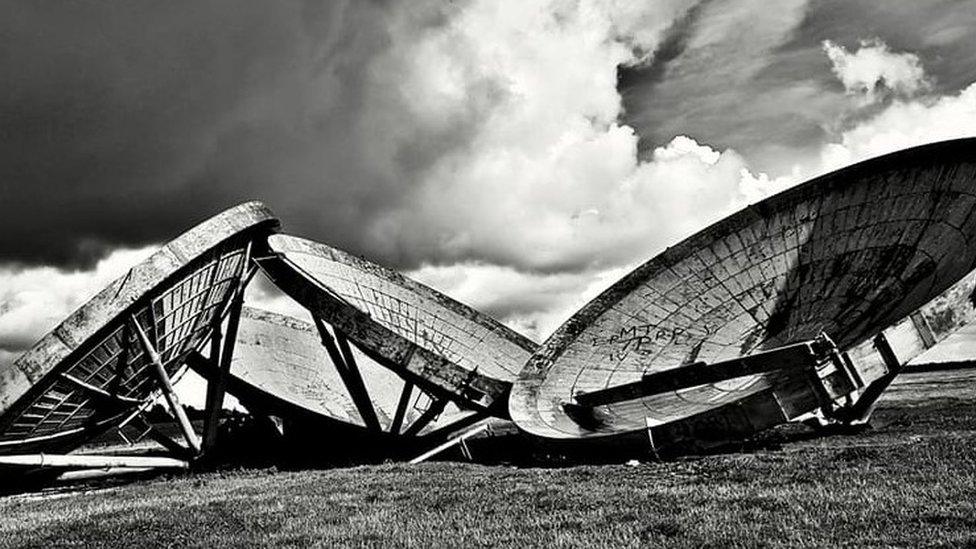RAF Stenigot Cold War communications dishes 'sold for scrap'
- Published

Three of four giant communications dishes which mysteriously disappeared from a World War Two RAF station may have been scrapped, it has emerged.
The 20m-wide long-distance microwave dishes at RAF Stenigot in Lincolnshire were abandoned in the 1980s after the systems became redundant.
The dishes, which appeared recently in the Channel 4 series Hidden Britain by Drone, were a popular local landmark.
The MoD said the removal work was undertaken by the current landowners.
According to Lincolnshire Live, external, the dishes, which were part of an emergency communications network between Nato countries, were "chopped up" by a local firm and sent to a scrapyard.
Allow X content?
This article contains content provided by X. We ask for your permission before anything is loaded, as they may be using cookies and other technologies. You may want to read X’s cookie policy, external and privacy policy, external before accepting. To view this content choose ‘accept and continue’.
The site's owners have been contacted by the BBC but are yet to respond.
Most of the former RAF station had been previously demolished apart from the Grade II listed radar tower which is still used by the RAF Aerial Erector School for training.
It is not yet known if there were any protection orders in place for the dishes.

The dishes were used from 1956 until the late 1980s when new communications technology made them redundant

They were part of an emergency communications network between Nato countries
A spokesman for the local authority, East Lindsey District Council, said: "We do have an investigation under way looking into this matter.
"This will be to determine whether the removal of the dishes would have required permission."
More news and stories from across Lincolnshire
Richard Hardesty, from Louth, who was a regular visitor to the site, said he was "hugely disappointed".
Allow X content?
This article contains content provided by X. We ask for your permission before anything is loaded, as they may be using cookies and other technologies. You may want to read X’s cookie policy, external and privacy policy, external before accepting. To view this content choose ‘accept and continue’.
Others also expressed their disappointment.
Steve Mack, who photographed the site in 2017, said he was shocked by the news.
"They should have been protected for future generations to visit, and to understand what they were used for," he said.
- Published28 June 2015
